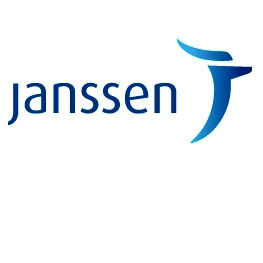预约演示
更新于:2025-05-07
Paracoccidioidomycosis
副球菌病
更新于:2025-05-07
基本信息
别名 Almeida、BLASTOMYCOSIS, SOUTH AMERICAN、Blastomycosis, South American + [57] |
简介 A mycosis affecting the skin, mucous membranes, lymph nodes, and internal organs. It is caused most often by Paracoccidioides brasiliensis. It is also called paracoccidioidal granuloma. |
关联
1
项与 副球菌病 相关的药物靶点 |
作用机制 C14DM拮抗剂 [+1] |
最高研发阶段批准上市 |
首次获批国家/地区 美国 |
首次获批日期1981-06-12 |
2
项与 副球菌病 相关的临床试验NCT06523998
Retrospective Descriptive Observational Study of the Epidemiological, Clinical and Therapeutic Profile of Patients With Rare Infections of Dermatological Interest at Three Major Reference Hospitals in Costa Rica From 2019-2023
In Costa Rica there are some descriptive studies of some of these rare infectious diseases (sporotrichosis, chromomycosis and mycetomas); however, there are no recent published reports. Most of the publications on the subject date back to the previous century; from 2000 to the present year there are only publications of small series of cases, so the current behavior of these skin infections is unknown. The primary objective is to analyze the epidemiological, clinical, and therapeutic profile and determine the risk factors in patients with a diagnosis of rare infections of dermatological interest treated at Hospital México, Hospital Rafael Calderón Guardia, and Hospital San Juan de Dios during the period 2019-2023.
开始日期2023-12-11 |
申办/合作机构- |
DRKS00022878
A multicenter study to increasedrug safety concerning the usage of systemic antifungal agents in haematology and oncology - MAAMy
开始日期2021-04-01 |
申办/合作机构- |
100 项与 副球菌病 相关的临床结果
登录后查看更多信息
100 项与 副球菌病 相关的转化医学
登录后查看更多信息
0 项与 副球菌病 相关的专利(医药)
登录后查看更多信息
2,020
项与 副球菌病 相关的文献(医药)2025-04-01·Molecular Aspects of Medicine
When to suspect and how properly early detect and treat patients with endemic mycoses
Review
作者: Santos, Daniel Wagner de C L ; Peçanha-Pietrobom, Paula M ; Colombo, Arnaldo L ; Caceres, Diego H
2025-03-27·Open Forum Infectious Diseases
Paracoccidioidomycosis as a Manifestation of Immune Reconstitution Inflammatory Syndrome in an HIV Patient: An Uncommon Presentation
Article
作者: Lima, Luiz A A ; Carneiro, Ana H P C ; Djahjah, Maria Célia ; Mendes, Isabel C M ; Lóta, Francine C ; Paschoal, Marilene M ; Silva, Amanda P O ; Souza, Sergio A L
2025-02-14·Medicine
First case report of long-term latent infection paracoccidioidomycosis in China
Article
作者: Wu, Shaoling ; Dong, Haiping ; Tang, Guidan ; Liang, Xiaocheng ; Wang, Weiyong ; Liang, Feng ; Hu, Jinxing ; Liao, Weixiang ; Li, Hua ; Pan, Yanshan ; Cao, Zhizhong ; Li, Donghai ; Feng, Jingyuan ; Zhou, Wei
1
项与 副球菌病 相关的新闻(医药)2022-11-01
·药时代
晶云药物全球商务部负责人陈岑博士:诚邀您出席2022第三届中国新药CMC高峰论坛!皮肤型红斑狼疮(CLE)和系统性红斑狼疮(SLE)是红斑狼疮的两种不同类型。SLE除了像CLE一样累及皮肤外,还会伴有肾脏、心脏、肺、血液、神经等多个器官和系统受累,免疫系统的异常贯穿了SLE整个发病过程。而BDCA-2对两种类型红斑狼疮的治疗具有重大意义。01靶点概述血液树突状细胞抗原2(BDCA-2),也被命名为CLEC4C或CD303,在浆细胞样树突状细胞(PDC)上唯一表达,是一种II型c型凝集素。BDCA-2结构[1]与BCR信号转导类似,BDCA-2可能是通过与其网格蛋白介导的内吞作用的内化有关,BDCA-2信号传导诱导酪氨酸磷酸化和酪氨酸激酶依赖性钙内流,交联BDCA-2导致受刺激的PDC中 I 型干扰素(IFN-I)产生受到抑制,而PDC是主要的IFN-I生成者。另外BDCA-2信号传导导致 IFN-I 基因和 IFN-I 反应基因的转录水平降低,表明受刺激的 PDC 对 IFN-I 产生的抑制至少在转录水平上受到调节。众所周知,PDC 产生的 IFN-I 被认为是红斑狼疮患者的主要病理生理因素。02信号通路BDCA-2胞外部分的c型碳水化合物识别域包含典型的c型动物凝集素的特征基序,与甘露糖、葡萄糖或N-乙酰葡糖胺结合。由于BDCA-2的胞内部分缺少任何已知的信号基序,但是BDCA-2与FcR γ链存在免疫共沉淀,因此与FcR γ链相关的BDCA-2在B细胞抗原受体(BCR)样信号体中发出信号。触发BDCA-2会导致酪氨酸激酶(Syk)的激活、B细胞连接蛋白(SLP65)的募集和磷脂酰肌醇特异性磷酯酶(PLCγ2)的活性,PLCγ2的激活可能诱导钙流入并在PDC中充当负调节剂,介导IFN-Ⅰ抑制并通过BDCA2触发减少NFKB的激活。BDCA-2通路[2]有多项研究表明,活动期SLE患者血清中IFN-Ⅰ的水平与健康人相比明显升高,并与疾病严重程度和进展相关。前文提到,BDCA-2的信号传导会使得PDC产生IFN-Ⅰ受到抑制,且不受IFN-Ⅰ其他诱导刺激的影响,因此BDCA-2相关的药物研发,可以通过减少IFN-Ⅰ的产生来达到治疗SLE的目的。03在研格局目前,全球用于红斑狼疮治疗的BDCA-2药物并不多,进展最快的是渤健生物开发的BDCA2单抗BIIB059(Litifilimab),通过抑制BDCA-2,减少IFN-Ⅰ等炎性细胞因子的产生,从而达到治疗红斑狼疮的目的。BIIB059是全球唯一一款进入临床的BDCA-2单抗,其中SLE治疗在美国已经推进至临床III期,CLE治疗推进至临床II期。值得注意的是,BIIB059还为CLE的治疗带来了新希望。今年7月,关于BIIB059治疗CLE的疗效和安全性的II期临床试验发表于“New England Journal of Medicine”(IF=176.079),试验通过对132名18-75岁的CLE患者进行随机分组治疗。结果表明该靶点抗体药可以改善CLE患者的皮肤病活动性,对CLE的治疗效果高于安慰剂治疗,从基线到第16周,CLASI-A评分的最小二乘平均值(±SE)百分比变化:50mg litifilimab组为-38.8±7.5;150mg litifilimab组为-47.9±7.4;450mg litifilimab组中-42.5±5.5;安慰剂组为-14.5±6.4。重复测量回归模型CLASI-A评分的基线变化百分比分析结果04其他应用除红斑狼疮外,BDCA-2在其他免疫疾病和血液瘤中也表现了巨大潜力。在一些慢性炎症中,DCs的亚群失调或增加,包括子宫内膜异位症、慢性鼻炎伴鼻息肉、哮喘、颈动脉硬化、I型糖尿病、组织细胞坏死性淋巴结炎、克雅氏病和II型糖尿病患者伴牙周炎。在感染性疾病的研究中。EBV、人类免疫缺陷病毒(HIV)、寨卡病毒和某些真菌感染(例如染色芽生菌病和副球孢子菌病)中,均涉及到BDCA-2信号传导。在自免疾病中,除红斑狼疮,干燥综合征、斑秃 、白癜风和多发性肌炎等疾病也与BDCA-2有关,如在患有多发性肌炎、皮肌炎和其他炎症性肌病 的患者的肌肉纤维中发现了高水平的 BDCA-2(+) pDC。在血液瘤中,pDC 的恶性增殖也与某些血液瘤的发病机制有关,特别是原始浆细胞样树突状细胞肿瘤 (BPDCN) 和伴有 pDC 克隆扩增的急性骨髓性白血病 (pDC-AML)。此外,研究表明BDCA-2也可能在实体瘤治疗中发挥作用,如黑色素瘤和非小细胞肺癌等。小结:目前,对于BDCA-2药物的研究并不多,且主要适应症为红斑狼疮,但众多研究已经表明了BDCA-2在多领域疾病治疗中的潜力,也期待渤健的Litifilimab治疗CLE的临床研究继续带来好消息。参考:1.https://structure-ncbi-nlm-nih-gov.libproxy1.nus.edu.sg/ 2.DOI:10.1080/10428194.2021.19751923.DOI: 10.1056/NEJMoa21180244.https://doi-org.libproxy1.nus.edu.sg/10.1002/eji.2007377115.https://pharmsnap-zhihuiya-com.libproxy1.nus.edu.sg/ 封面图来源:123rf版权声明/免责声明本文为授权转载文章,版权归拥有者。仅供感兴趣的个人谨慎参考,非商用,非医用、非投资用。欢迎朋友们批评指正!衷心感谢!文中图片、视频为授权正版作品,或来自微信公共图片库,或取自公司官网/网络根据CC0协议使用,版权归拥有者。任何问题,请与我们联系(电话:13651980212。微信:27674131。邮箱:contact@drugtimes.cn)。衷心感谢!博腾股份工艺化学服务部负责人,技术平台负责人史峰博士:诚邀您出席2022第三届中国新药CMC高峰论坛!前FDA检查官、Live Oak Quality Assurance 创始人兼总裁Peter Baker 先生:诚邀您出席2022第三届中国新药CMC高峰论坛!666位嘉宾将出席盛会!2022第三届中国新药CMC高峰论坛最终日程113本新药好书免费送:《新药的故事1-3》《十亿美元分子》《药明康德经典译丛》……中国新药CMC高峰论坛“十三邀”!点击这里,准时参会!
抗体
分析
对领域进行一次全面的分析。
登录
或

Eureka LS:
全新生物医药AI Agent 覆盖科研全链路,让突破性发现快人一步
立即开始免费试用!
智慧芽新药情报库是智慧芽专为生命科学人士构建的基于AI的创新药情报平台,助您全方位提升您的研发与决策效率。
立即开始数据试用!
智慧芽新药库数据也通过智慧芽数据服务平台,以API或者数据包形式对外开放,助您更加充分利用智慧芽新药情报信息。
生物序列数据库
生物药研发创新
免费使用
化学结构数据库
小分子化药研发创新
免费使用

